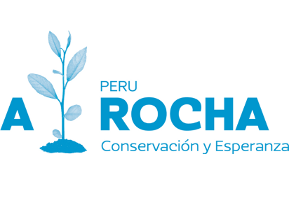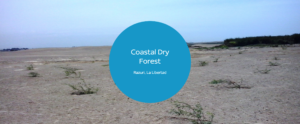Reforesting the Threatened Dry Forest Ecosystem in La Libertad, Peru (2013 – 2016)
The La Libertad Dry Forest Restoration Project began in March of 2013. It is a four-year project that aimed to reforest dry forest ecosystems, working in collaboration with local communities and other local actors in the Razuri district, Ascope province in La Libertad.
Reforestation
Within the reforestation component, the project aims to reforest the dry forest ecosystem with native species. Thanks to an agreement between A Rocha Peru and the National University of Trujillo, the project has access to a nursery in the university´s botanical garden, where we produce ‘Algarrobo’ seedlings (Prosopis spp.) and also seedlings of other native species such as ‘Zapote’, ‘Tara’ and native cotton. This is where volunteers and university students, as well as some professionals, have been trained in managing the nursery and the production of seedlings for reforestation. In January 2014, A Rocha Peru and the Razuri municipality signed an agreement to reforest 4 hectares of arid landscapes in sector 2B of the district, which includes the El Tubo wetlands where the municipality plans on establishing a regional conservation area.

Environmental Education
In the area of capacity building and environmental education, we are looking to educate communities on the importance and benefits of dry forest conservation. Through the agreement with the National University of Trujillo, we were able to train students and volunteers who are instrumental to the development and sustainability of the project. We carry out talks and workshops on environmental education, as well as having developed a digital handbook on environmental education to teach children about dry forest conservation.
During the second year of the project, the environmental youth club “Chicama Blue Planet” was established in Razuri. The members of the club are youth aged 13-19 who were recruited from a Razuri municipality vocational program on social management and who have become leaders in their community, carrying out different environmental activities. One of the club’s projects was to redesign a main street in Razuri (Pasaje Arequipa) with green areas, and they also carry out community service work and environmental awareness initiatives for the community.

Research
Reproduction trials of ‘Algarrobo’/’Huarango’ (Prosopis spp.) trees and native cotton (Gossypium barbadense) in Trujillo, La Libertad (Aracely Gonza & Jordan De la Cruz, 2014-2015)
Volunteers from the National University of Trujillo carried out studies on native plant reproduction to inform A Rocha Peru’s reforestation activities in La Libertad. One study investigated the characteristics of seed germination of key dry forest species like ‘Algarrobo’/’Huarango’ (Prosopis spp.). Another study tested the effect of concentrations of 2,4-dichlorophenoxyacetic on the rooting process of native cotton cuttings (Gossypium barbadense); native cotton has the particularity of presenting a wide variability of natural colours, ranging from brown to orange, red, olive, lilac, and off-white. With the help of an intern from Wheaton College’s HNGR program (USA), A Rocha Peru aims to revive the cultivation of this native species as an income-generating activity for local communities.

Dry forest relicts in La Libertad, northern Peru: current status and drivers of deforestation (Tim Bos, 2015)
The current distribution and status of dry forest relicts in La Libertad, northern Peru, is not well known. This is the topic of a Tropical Forestry student’s thesis from the University Van Hall-Larenstein (the Netherlands). An important aspect of this research project is to investigate the external drivers of forest cover change from an interdisciplinary perspective. Towards this end, a combination of approaches from social and natural sciences, and participatory action-research, are being applied. Methods employed include semi-structured interviews with local stakeholders, participatory mapping, forest inventories and analysis of spatial data.


